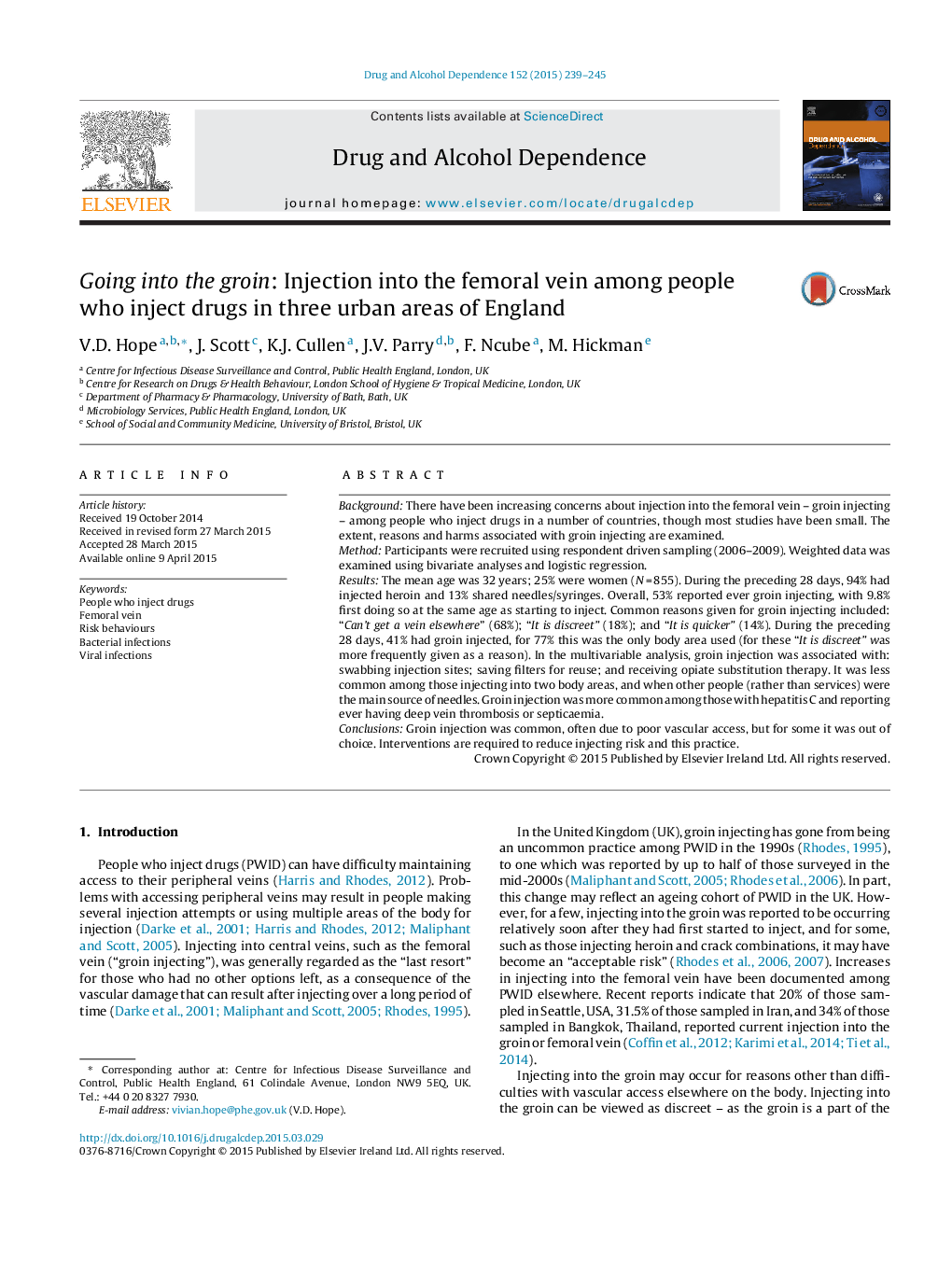| Article ID | Journal | Published Year | Pages | File Type |
|---|---|---|---|---|
| 1069793 | Drug and Alcohol Dependence | 2015 | 7 Pages |
•53% reported ever groin (femoral vein) injecting; 41% in preceding month.•The most common reasons were “Can’t get a vein elsewhere”, “discreet” and “quicker”.•Half first injected into the groin within 5-years of starting to inject.•1 in 10 started groin injecting at the same age that they started injecting.•For some groin injecting may now be by choice, and not the last resort.
BackgroundThere have been increasing concerns about injection into the femoral vein – groin injecting – among people who inject drugs in a number of countries, though most studies have been small. The extent, reasons and harms associated with groin injecting are examined.MethodParticipants were recruited using respondent driven sampling (2006–2009). Weighted data was examined using bivariate analyses and logistic regression.ResultsThe mean age was 32 years; 25% were women (N = 855). During the preceding 28 days, 94% had injected heroin and 13% shared needles/syringes. Overall, 53% reported ever groin injecting, with 9.8% first doing so at the same age as starting to inject. Common reasons given for groin injecting included: “Can’t get a vein elsewhere” (68%); “It is discreet” (18%); and “It is quicker” (14%). During the preceding 28 days, 41% had groin injected, for 77% this was the only body area used (for these “It is discreet” was more frequently given as a reason). In the multivariable analysis, groin injection was associated with: swabbing injection sites; saving filters for reuse; and receiving opiate substitution therapy. It was less common among those injecting into two body areas, and when other people (rather than services) were the main source of needles. Groin injection was more common among those with hepatitis C and reporting ever having deep vein thrombosis or septicaemia.ConclusionsGroin injection was common, often due to poor vascular access, but for some it was out of choice. Interventions are required to reduce injecting risk and this practice.
